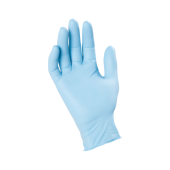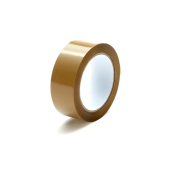Nitrile gloves are a trusted choice for construction professionals, offering exceptional durability, flexibility, and chemical resistance. In this guide, we’ll help you understand how to choose the best nitrile gloves for construction applications, ensuring safety, comfort, and performance on the job site. By reading through to the end, you’ll not only have the confidence to select the perfect gloves but also find solutions to related challenges you may face, such as proper glove disposal or choosing gloves for other specialized tasks.
For a broader overview of nitrile gloves and their applications, refer to the comprehensive buyer’s guide on nitrile gloves.
Why Are Nitrile Gloves Essential in Construction?
Construction work involves handling sharp tools, abrasive surfaces, and chemicals, making nitrile gloves a proactive choice to ensure safety and efficiency in these demanding conditions. For example, nitrile gloves are particularly beneficial when handling concrete that can cause skin irritation or working with adhesives and solvents that require chemical resistance. Nitrile gloves are designed to withstand these challenges, making them an ideal choice for this demanding field.
- Durability: Nitrile gloves resist tears and punctures better than latex or vinyl alternatives.
- Chemical Resistance: They protect against oils, greases, adhesives, and certain solvents frequently encountered on construction sites.
- Allergy-Free: Made from synthetic materials, nitrile gloves are safe for those with latex allergies.
Comparing various types of gloves:
| Feature | Nitrile Gloves | Latex Gloves | Vinyl Gloves |
| Durability | High | Medium | Low |
| Chemical Resistance | Excellent | Moderate | Low |
| Allergy-Friendly | Yes | No | Yes |
| Flexibility | Good | Excellent | Moderate |
| Cost | Moderate | Moderate | Low |
To explore more about the benefits of nitrile gloves, visit the Nitrile Gloves product category.
Factors to Consider When Choosing Nitrile Gloves for Construction
1. Glove Thickness
The thickness of nitrile gloves directly impacts their performance. In construction, where durability and protection are crucial, opt for gloves with higher mil ratings.
| Application | Recommended Thickness |
| Light tasks (e.g., painting) | 3-5 mil |
| General construction | 5-8 mil |
| Heavy-duty work | 8+ mil |
Thicker gloves offer better resistance to punctures and chemicals but may reduce tactile sensitivity. For more information on how to choose the right glove thickness, check the guide to disposable gloves.
2. Grip and Texture
A strong grip is vital for handling tools and materials. Look for gloves with:
- Textured fingertips for enhanced grip in wet or oily conditions.
- Fully textured surfaces for maximum control.
3. Fit and Comfort
Properly fitting gloves enhance safety and productivity by providing comfort and full dexterity, reducing the likelihood of workplace incidents. Use this sizing guide to find your perfect fit:
| Hand Circumference (cm) | Size |
| 15-18 | Small |
| 18-21 | Medium |
| 21-23 | Large |
| 23-26 | X-Large |
For detailed instructions on measuring your hands, refer to our glove sizing guide.
4. Compliance with Standards
Ensure the gloves meet European safety standards such as EN 374 for chemical protection and EN 388 for mechanical risks. Always verify certifications before purchasing. Additionally, consider how to balance cost and quality—investing in moderately priced nitrile gloves with essential certifications can offer the best value for budget-conscious professionals while ensuring safety and performance.
Specialty Nitrile Gloves for Construction
Depending on your specific tasks, you may need gloves with additional features:
- Chemical-Resistant Nitrile Gloves: Ideal for handling hazardous substances like solvents and adhesives. Learn more in the chemical-resistant gloves guide.
- Vinyl Gloves for Affordability: If cost-effectiveness is a priority, consider vinyl gloves for less hazardous tasks.
- Sterile or Cleanroom Gloves: When working in controlled environments, choose cleanroom gloves.
Comparing Nitrile Gloves to Other Materials
| Feature | Nitrile Gloves | Vinyl Gloves | Latex Gloves |
| Durability | High | Low | Medium |
| Chemical Resistance | Excellent | Low | Moderate |
| Allergy-Friendly | Yes | Yes | No |
For an in-depth comparison, check out our nitrile vs vinyl gloves article.
Practical Tips for Using Nitrile Gloves in Construction
- Inspect Gloves Regularly: Check for tears or punctures before and during use.
- Store Properly: Keep gloves in a cool, dry place to maintain their integrity.
- Dispose Safely: Follow local guidelines for disposing of single-use gloves to minimize environmental impact. Embracing eco-friendly practices, such as participating in recycling programs or using biodegradable gloves, can significantly reduce waste and contribute to a healthier planet.
Where to Buy the Best Nitrile Gloves for Construction
Droppe offers a wide selection of high-quality nitrile gloves for construction professionals. Browse our Nitrile Gloves category to find the perfect pair for your needs. For additional options, explore related categories:
Final Thoughts
We hope this guide has been helpful in navigating the key factors for choosing the best nitrile gloves for construction. From evaluating thickness and grip to ensuring compliance with European safety standards, you’re now equipped to make a confident choice. Whether you’re managing heavy-duty tasks or ensuring safety in demanding environments, the right gloves can make all the difference.
Explore the full range of Nitrile Gloves on Droppe, where trusted brands provide reliable options for every construction scenario.
Have questions or need advice on your next purchase? Don’t hesitate to reach out—we’re always here to help you stay safe and confident in your decisions.
Frequently Asked Questions
While nitrile gloves are designed for durability, most are single-use and should be disposed of after handling hazardous materials or when damaged. For tasks requiring repeated use, consider heavy-duty, reusable nitrile gloves designed for extended wear.
While nitrile gloves are designed for durability, most are single-use and should be disposed of after handling hazardous materials or when damaged. For tasks requiring repeated use, consider heavy-duty, reusable nitrile gloves designed for extended wear.
Opt for gloves with textured fingertips or fully textured surfaces for enhanced grip. Ensuring a proper fit also prevents slipping or reduced control when handling tools.
While nitrile gloves offer good puncture resistance, they may not be sufficient for tasks involving sharp tools. For such applications, consider cut-resistant gloves made with reinforced materials like Kevlar, paired with nitrile for chemical resistance.
Dispose of nitrile gloves following local regulations. For eco-friendly options, explore recycling programs or biodegradable nitrile gloves, which break down more easily and reduce environmental impact.














